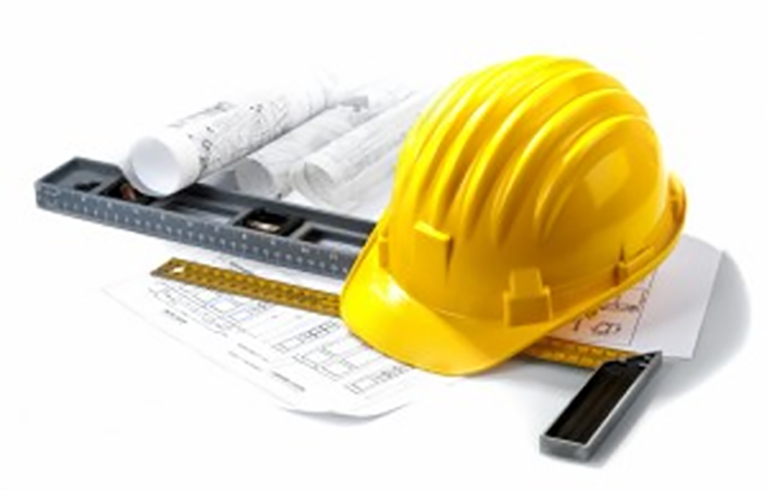Guide to managing construction projects
Contents |
[edit] Introduction
In this guide to managing construction projects, we cover the technical skills along with the deployment of construction project management software to keep projects on track.
This guide to managing construction projects also includes best practice tips to help avoid pitfalls on construction projects. It provides specific advice to help complete a construction project with success.
[edit] Construction project phases
Construction projects have clear phases within their lifecycles – concept, planning, implementation, control and close out. These give guidance on how to get things done on budget and on time. Skipping any will likely mean your project is running out of control.
This will include setting up the project phases and defining deliverables for each milestone.
Most projects that follow best practice use the following main phases:
- Conception. Before you plan anything investigate the feasibility of the project. Complete a project feasibility report. This should include costs, deliverables, timelines, and how and why it will be done.
- Planning. Once the project has the go ahead with scope, budgets and timelines set, start planning how to achieve each phase. Complete a work breakdown structure for each part of the construction project. Allocate resources and setup a schedule in construction project management software. Make sure to include every last task with timelines and costs assigned.
- Implementation. Implementation begins when people actually start the physical work. This is when the construction of the building occurs. You need to keep on top of:
- Time management. Keep track of time. Use the schedule to compare estimated times to finish against actual completion times.
- Managing costs. You should already have estimated costs against each task in the schedule. Add in actual costs on completion of each task.
- Managing quality. Quality management is vital for the quality of the end product. Without processes and procedures to ensure the quality of every aspect of the build, there is no way to maintain a quality build.
- Managing change. Good processes for change management make changes simple to execute. Construction management software can manage the change process for you. This makes it simple for all stakeholders to access with transparency.
- Managing risks. Risks should already be logged into a risk register. Keep a close eye on these so you can mitigate them before they occur.
- Keeping control. Keeping control is really part of implementation. It is all about staying on top of the costs, risks and meeting timelines to get those milestone payments.
- Project close out. Wrapping it up is an important part of the construction project process. To close out a project write a report, address any outstanding issues, file any administrative paperwork for completion and redistribute resources no longer required on the project.
[edit] Setting up roles and management systems
All construction projects have clear roles with responsibilities assigned, along with management systems to make everyone accountable. It is important for the success of a project that there are clear leaders with good communications skills to lead the construction team.
Assign roles and responsibilities to team members with matching skills. Take advantage of people’s key strengths to get the best outcomes.
[edit] Managing quality assurance
How do you manage quality assurance? This takes knowledge of legislation and regulations. You also need to know how to set up processes to maintain quality assurance during each project phase. Construction projects have to meet many standards. Missing anything can mean expensive repairs after completion. And, a loss of your reputation.
[edit] Tracking and identifying variances
Tracking is vital to any construction project. It allows for the identification and resolution of project variances. Using construction project software can take care of everything you need. Reports, cost overruns schedule slippages can all be identified and reported on automatically. You need ways of measuring the performance of the project that you can apply to the work breakdown structure and any other parts of the work. Examples of measurements you can use include:
- Budgeted cost of work. This is the scheduled cost in the budget for the scheduled work.
- Actual cost of work. This is the cost of work completed at any time according to the organisation’s accounting system.
- Budgeted cost of work performed. This is the earned value of the completed work at any nominated time.
- Estimated cost at completion. This is the expected cost to complete the construction project calculated at any given point in a project.
By using the work breakdown structure as the basis for project tracking it helps to establish a project baseline. This gives you something to measure against.
These best practices are interrelated. By missing any of these, your project will run into trouble. With the complexity of managing construction projects, project managers need all the tools available. Construction project management software makes it easy to track projects with transparency. It also helps when dealing with the change process and alerting to potential risks all in a central database. We hope you enjoyed reading this guide to managing construction projects.
--RaptorPM
[edit] Related articles on Designing Buildings Wiki
- Building management systems.
- Code of practice for project management.
- Construction management: outline work plan.
- Construction project management software.
- Construction project manager - morning tasks.
- E-procurement.
- Information and communications technology in construction.
- Signs you need construction project management software.
Featured articles and news
Design and construction industry podcasts
Professional development, practice, the pandemic, platforms and podcasts. Have we missed anything?
C20 Society; Buildings at Risk List 2025
10 more buildings published with updates on the past decade of buildings featured.
Boiler Upgrade Scheme and certifications consultation
Summary of government consultation, closing 11 June 2025.
Deputy editor of AT, Tim Fraser, discusses the newly formed society with its current chair, Chris Halligan MCIAT.
Barratt Lo-E passivhaus standard homes planned enmasse
With an initial 728 Lo-E homes across two sites and many more planned for the future.
Government urged to uphold Warm Homes commitment
ECA and industry bodies write to Government concerning its 13.2 billion Warm Homes manifesto commitment.
From project managers to rising stars, sustainability pioneers and more.
Places of Worship in Britain and Ireland, 1929-1990. Book review.
The emancipation of women in art.
Call for independent National Grenfell oversight mechanism
MHCLG share findings of Building Safety Inquiry in letter to Secretary of State and Minister for Building Safety.
The Architectural Technology Awards
AT Awards now open for this the sixth decade of CIAT.
50th Golden anniversary ECA Edmundson awards
Deadline for submissions Friday 30 May 2025.
The benefits of precast, off-site foundation systems
Top ten benefits of this notable innovation.
Encouraging individuals to take action saving water at home, work, and in their communities.
Takes a community to support mental health and wellbeing
The why of becoming a Mental Health Instructor explained.
Mental health awareness week 13-18 May
The theme is communities, they can provide a sense of belonging, safety, support in hard times, and a sense purpose.
Mental health support on the rise but workers still struggling
CIOB Understanding Mental Health in the Built Environment 2025 shows.
Design and construction material libraries
Material, sample, product or detail libraries a key component of any architectural design practice.


























